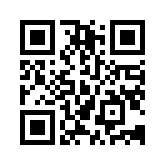Poison Ivy, Oak or Sumac?
This time of year I am frequently faced with patients with allergic contact dermatitis. Patients often ask what caused the rash and are surprised when I don’t have an exact answer. Many patients with a history of reaction to plants tell me that they can tell what kind of “poison” they contacted by how the rash looks. But, scientifically it really is hard to tell what the culprit is just by looking at the rash. So let’s learn about poison ivy and it’s friends this week.
When attempting to identify the plant, Poison Ivy and Poison Oak each has three leaflets. “Leaves of three, let it be”. The tips of the leaflets are more pointed on Poison Ivy and more rounded on Poison Oak. Both Poison Ivy and Poison Oak grow as a bush or a vine. In contrast, Poison Sumac has clusters of 7 to 13 leaflets arranged in pairs and grows as a tree. Often, all “poison” has a shiny or red orange color to the new leaves.
One major reason why it is impossible to tell which plant species caused the rash is that the same chemical causes the allergic reaction in ALL THREE. It is called Urushiol. Urushiol is a very common allergen. Most people have a reaction when they are exposed to urushiol. Dr Rosenberger is one of the rare people who does not seem to be allergic to urushiol.
In addition to Poison ivy, Poison oak and Poison sumac, cashews, mangoes, pistachios, Japanese lacquer tree and gingko leaves all can contain urushiol. Urushiol is found in raw cashew and mango shells, in mango skin and in the sap of the lacquer tree and gingko biloba leaves.
The rash seen after contacting urushiol is technically called allergic contact dermatitis. The rash occurs as a direct result of exposure to the oils in the leaves on poison ivy, oak and sumac.
Because the rash comes from direct exposure to the oils, you cannot spread the rash days later or catch it from someone else. However, the oil can remain for some time on clothing, tools, boots, gloves and can be carried in by pets. As a good habit, remove all clothes when coming in from working or playing in the yard. I try to turn my work clothes and gloves inside out, especially if I am not putting them in the washer immediately. Otherwise, I could contact the oils again when doing the laundry.
The rash develops at different times, on average 1-7 days after exposure to the oils. The development of the rash depends on the “dose” of the oil received and the thickness of the skin where it contacts. New areas can continue to appear for days to weeks from the initial exposure depending on the thickness of the skin and the amount of oil exposure.
If you do develop poison ivy, it is best to treat it topically unless it involves an orifice (mouth, nose, eyes, ears, genitalia) or covers a large part of the body. It is NOT a good idea to go to urgent care and get a steroid shot or a Medrol Dosepack. Here’s why…
If we consider the day you come in contact with the oils of the plant Day ZERO, it usually takes about 4 days for the rash to get bad enough for you to the doctor. Once there, if prescribed a 6 day course of medicine, you are out of medicine at Day 10. VERY IMPORTANT TIP! Poison ivy rash can often take 21 days or more to run its course, and in my experience the reaction peaks at day 10-14. So, with a 6 day course of medicine, patients run out of medicine at the PEAK. For severe cases, I often recommend a 15 day tapering dose of oral prednisone to get patients on the other side of that peak.
As summer and fall progress, watch out for those “leaves of three (and thirteen)”. Share this helpful information with family and friends!
If you know someone who may find this article helpful, please share it with them! Follow us on social media this week, and subscribe to our growing YouTube channel! If you would like to receive these posts in your email inbox, Subscribe to our Site.
